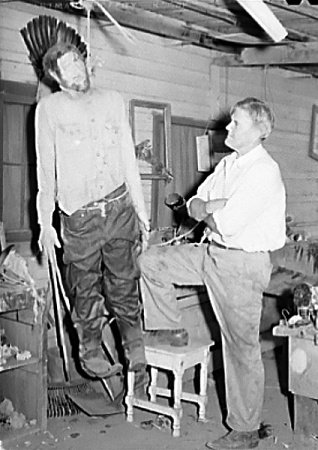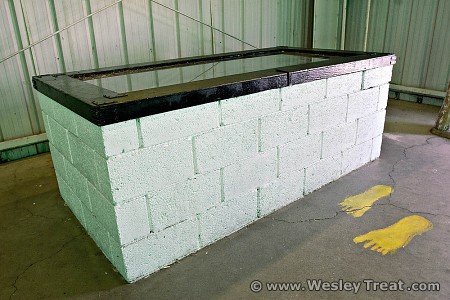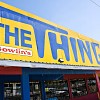Continued From Page 1 ... For a moment, you ponder both the mystery of the object before you and whether a dollar was an appropriate admission price.
On your way out, as you pass a few more driftwood sculptures and an anticlimax of antique surreys, you contemplate what you've seen. Your curiosity has been allayed, but you feel less than satisfied, left with what some refer to as Dorito Syndrome — you've consumed an entire bag of cheesy goodness, but feel strangely unsated. Thankfully, a trunk full of Thing shot glasses, Thing magnets and Thing brand bottled water help to fill the void.
True satisfaction, however, is soon to come. You realize that knowledge of The Thing brings the empowering ability to irritate your friends, to withhold its secret until you can goad them into an unwitting road trip.
Mystery of the Desert ... Solved?
It's difficult to discuss the origin of The Thing without giving at least some idea what it is, so if you want to preserve your uncertainty, read something else. Otherwise, I'll try not to reveal too much.

Sometime in the 1950s an Arizona lawyer named Thomas Binkley Prince opened a curio shop outside Barstow, California. He had reportedly become bored with law, finding the profession "stuffy," so he moved his family to the Mojave Desert to jazz things up a bit. There, he established his business and fashioned it into a gallery of oddities.
Around the same time, a man named Homer Tate, pictured here, was running his own curiosity museum in Phoenix. His exhibits consisted of shrunken heads and various beasties like those he termed the "wolf boy" and the "bamboozle bat," all of which Tate had fabricated himself. Fashioned from papier-mâché, human hair and the hides of dead animals, Tate's bizarre creations were produced mostly for exhibition as sideshow gaffs.
Meanwhile, back in California, infrastructure was metastasizing. By 1965, expansion of the U.S. Interstate system had displaced Prince and his establishment, prompting him to move things back to Arizona. He reopened his attraction just east of Benson, right alongside Interstate 10, and placed The Thing at the top of the bill.
Now, it's unclear at what point Prince acquired The Thing, but it's very likely the item originated in Homer Tate's workshop. Not only do the timing and placement coincide, but experts on the subject — and they do exist — will attest that the quality of The Thing matches that of Tate's other work. It's hard to say exactly by what means it came into Prince's possession, but as Tate distributed his creatures worldwide via mail order, it's likely Prince had simply ordered it from a catalog.
Thomas Prince passed away in 1969, leaving his wife, Janet, to run things. Janet has since moved away and leased The Thing to Bowlin Travel Centers. Today, a portion of the money brought in by The Thing goes to a University of Arizona College of Law scholarship in Prince's name.
Homer Tate passed away in 1975.





